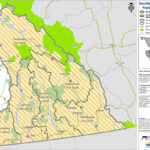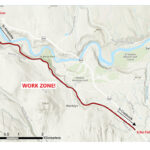Home »

Emergency kits are difference makers
We live in a world that’s unpredictable and without warning we may have to make quick decisions that impact the health and safety of our loved ones.
It’s easy to assume that we’ll be able to gather what we need when something unexpected happens. But few of us really know what will make the difference.
Imagine that a wild fire begins to threaten your neighborhood in the middle of the night. You may have to leave quickly or wait until local authorities tell you where and when it’s safe to go. In either situation, you want to be able to take care of your family for at least 72 hours. Having a well-stocked, portable, and easy-to-find emergency kit ensures that you have the basic supplies to keep you and your family safe.
In an emergency, basic services we use every day may not work. For example, your water, electricity, gas and telephone service may not work and it may be impossible to access cash from a bank. When these services are not available, an emergency kit can provide the basic necessities.

For example, we all need water. The rule of thumb is two litres, per person, per day – for 72 hours, or three days. It’s a good idea to use small bottles that can be carried easily.
And of course, we also need food. Because your kit needs to be ready at all times, use food that won’t spoil, like canned goods, energy bars or dried food that can be stored longer. If needed, baby formula and pet food may be a good idea. And remember a manual can opener to open those cans.
So now your kit has a good start: food and water. What else?
Well, it’s dark and there’s no electricity. A flashlight and radio will be handy to show you where you’re going and help you stay informed. These both need power, so pack extra batteries. Even better yet, buy the type that can be powered manually with a crank. Cordless home phones don’t work when there’s no electricity. Consider including a phone with a cord too.
Of course, an emergency kit wouldn’t be complete without a first-aid kit with the basics like bandages, antiseptics and pain relievers.
With these items, food and water, flashlight and radio, and a first-aid kit, we’ve covered the basics. But there are some items that may not be so obvious. For example, it may be very difficult to get prescription medications in an emergency or even long afterward.
Including enough medication for a couple of the weeks in the kit will help. While you’re thinking about medical needs, consider what equipment may be needed to accommodate family members with special needs.
As we mentioned, it may be difficult to get cash from banks so include small bills and change, as cash registers may not work.
Lastly, keeping important documents like copies of birth certificates, wills, passports and insurance policies in your kit can make it easier to stay organized during an emergency.
Remember to include a copy of your emergency plan, and contact information for friends and family who may be able to help. We all hope that emergencies don’t occur and your kit goes unused but that’s no reason to delay. It’s your responsibility to start gathering supplies and start thinking about what your family will need for at least 72 hours in an emergency.
It may look like a lot to do but you can print an emergency list checklist. And the next time you’re running errands, pick up a few items for your kit or, buy a pre-packaged one.
Having an emergency kit is an easy way to have more peace of mind in an unpredictable world. For more information, visit GetPrepared.ca or Kimberley.ca online or drop in to City Hall for a Household Emergency Planning handout.
– Rick Prasad is Assistant Fire Chief and Fire Prevention Officer with the Kimberley Fire Department.








